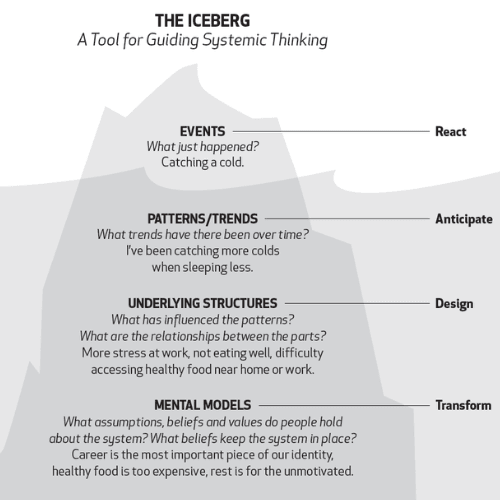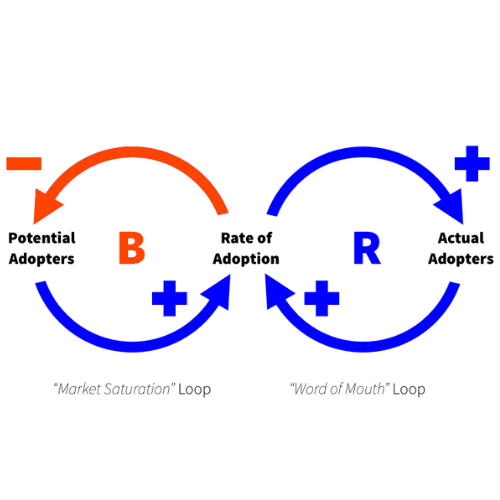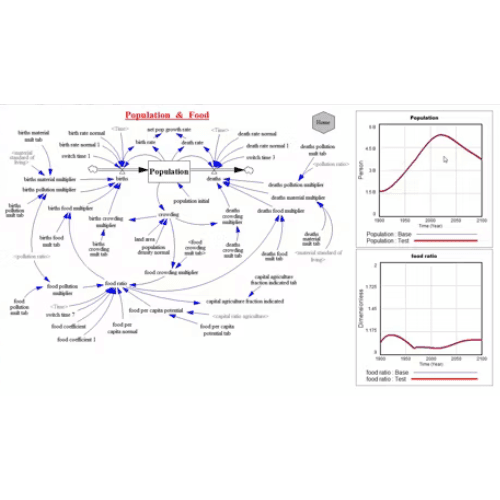As the complexity of modern problems increases, the need for a comprehensive approach to problem-solving becomes more vital. Systems thinking is a powerful perspective that offers a holistic way to analyze and understand various issues. In this blog, summarising a valuable paper about systems thinking entitled “What is Systems Thinking? A Review of Selected Literature Plus Recommendations” by Jamie P. Monat & Thomas F. Gannon, we will dive into the world of systems thinking, exploring its definition, core concepts, and tools that can aid in applying this approach to real-world problems.
Defining Systems Thinking
Systems thinking is a perspective that focuses on understanding the relationships and interconnections between the components of a system rather than the components themselves. It is a holistic approach that considers the whole system, recognizing that the behaviour and properties of the system cannot be predicted or understood by analyzing individual components in isolation.
There is no single, universally accepted definition of systems thinking. However, common themes found in various literature sources include:
- Systems thinking is the opposite of linear thinking.
- It focuses on relationships, interconnections, and the whole system rather than individual components.
- It acknowledges the dynamic nature of systems and their feedback loops.
- It recognizes self-organization and emergence as key properties of systems.
- It is a powerful tool for understanding and influencing complex socio-economic and natural systems.
Core Concepts of Systems Thinking
There are several key concepts that form the foundation of systems thinking. These include:

Holism
Holism is the idea that systems should be viewed as a whole, rather than focusing solely on their individual components. By examining the relationships and interactions between components, holistic thinking can provide a deeper understanding of the system’s behaviour and properties.

Dynamic Systems and Feedback
Systems thinking acknowledges that systems are dynamic and constantly subject to various forces and feedback mechanisms. These feedback loops can be either stabilizing (balancing) or reinforcing (amplifying), leading to different system behaviours over time.

Self-Organization and Emergence
Self-organization is the process through which system structures or patterns emerge without the intervention of a designer or central plan. Emergent properties are characteristics of the system as a whole that cannot be predicted or derived from the properties of its components. Understanding these properties is crucial for comprehending system behaviour.

Mental Models and Systemic Structures
In human-designed systems, mental models or paradigms influence the formation of systemic structures. These structures, in turn, impact patterns of behaviour and events. Identifying and understanding these underlying structures and mental models is essential for effective systems thinking.

Systems Modelling Principles for Problems in Socio-Economic Systems
One of the best books I’ve read for modelling managerial problems in socio-economic systems is “Tools for Thinking: Modelling in Management Science” by Michael Pidd.
In the following videos, I reviewed six systems modelling principles in socio-economic systems from the book.
Systems Thinking Tools
Various tools can be used to apply systems thinking to real-world problems. These tools help in analyzing, understanding, and influencing system behaviour. Some of the most fundamental and widely applicable tools include:

Systems Archetypes
Systems archetypes are common problem-causing structures that occur in various situations, environments, and organizations. Identifying these archetypes is the first step in changing the destructive structure. There are ten common archetypes, such as Accidental Adversaries, Fixes that Fail (policy resistance), and Limits to Growth.

Behaviour Over Time (BOT) Graphs
BOT graphs plot the values of relevant system variables over time. They help in understanding systemic behaviour and the interrelationships between variables.

Causal Loop Diagrams with Feedback and Delays
Causal loop diagrams help in visualizing the relationships and feedback mechanisms within a system. They can be used to identify key leverage points for influencing system behaviour.

Stock-Flow Diagrams
Stock and flow diagrams represent the accumulators (stocks) and changes (flows) within a system. They help in understanding the system’s structural elements and dynamic behaviour.

Systemigrams
Derived from the words “Systemic Diagram”, Systemigrams are storyboard-type visual representations of a system’s principal concepts, actors, events, patterns, and processes. They help in translating complex textual information into easily understandable diagrams.

System Dynamics / Computer Modeling
System dynamics is the study and analysis of system behaviour over time. Computer modelling can be used to create detailed simulations of system behaviour, allowing for better understanding and prediction of future states.

Interpretive Structural Modeling (ISM)
ISM is a computer-aided interactive learning process that helps identify systemic structures by transforming vague mental models into clear, well-defined graphic representations.

Systemic Root Cause Analysis (RCA)
RCA is a problem-solving method aimed at identifying the root causes of problems or events. Systemic RCA focuses on addressing the system that allowed the problem to occur, rather than just the symptoms.
Conclusion
Systems thinking is a powerful perspective that offers a holistic way to analyze and understand a wide range of complex problems and systems. By embracing its core concepts and utilizing its versatile tools, systems thinking can provide valuable insights and practical guidance for addressing the challenges and opportunities that lie ahead in our increasingly interconnected world. By fostering a deeper understanding of the relationships and interconnections within systems, we can promote more effective problem-solving strategies and pave the way for a more sustainable and resilient future. The true value of systems thinking lies in its ability to help understand and address complex real-world problems. By integrating concepts from various sources and applying the appropriate tools, systems thinking can be used to tackle diverse issues such as organizational failures, environmental disasters, economic crises, and global conflicts.
Access to my PublicationsHERE
Reference: Jamie P. Monat, Thomas F. Gannon, What is Systems Thinking? A Review of Selected Literature Plus Recommendations, American Journal of Systems Science, Vol. 4 No. 1, 2015, pp. 11-26. doi: 10.5923/j.ajss.20150401.02. Read the paperHERE
P.S. I benefited from AI technology to write this blog and enhance the quality of the content.
P.S. I will write more about the above-mentioned concepts and tools later.
P.S. Photo by Shubham Dhage on Unsplash